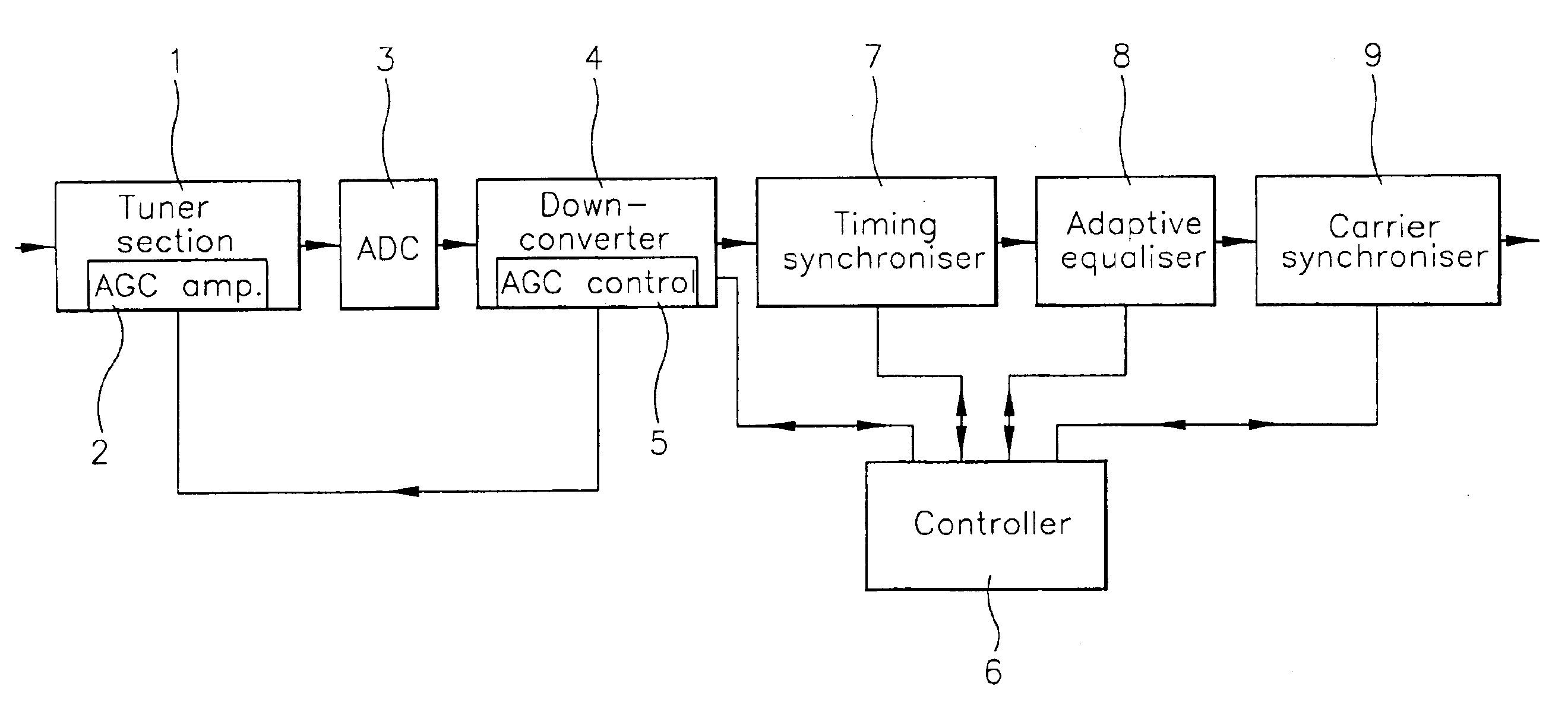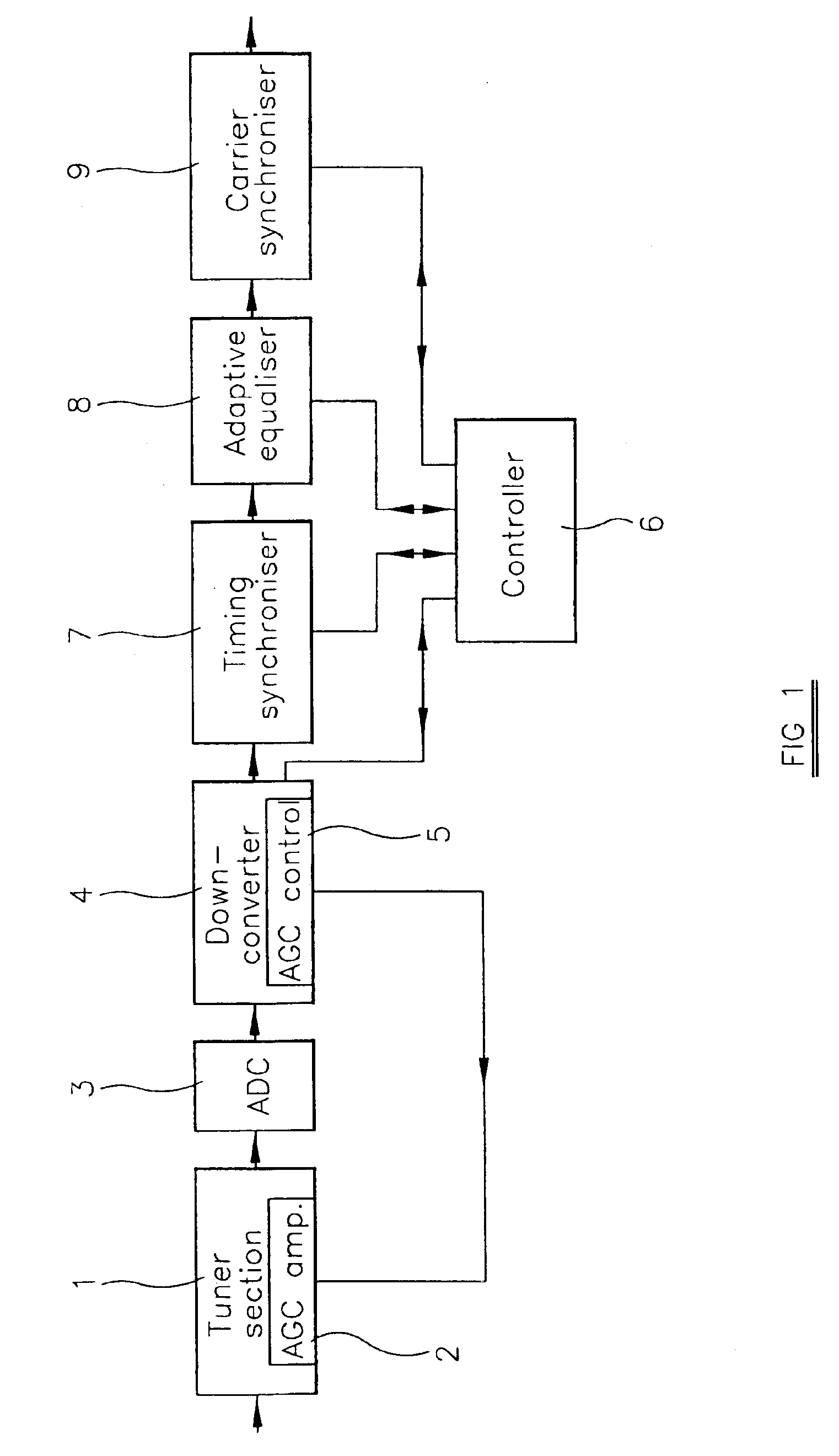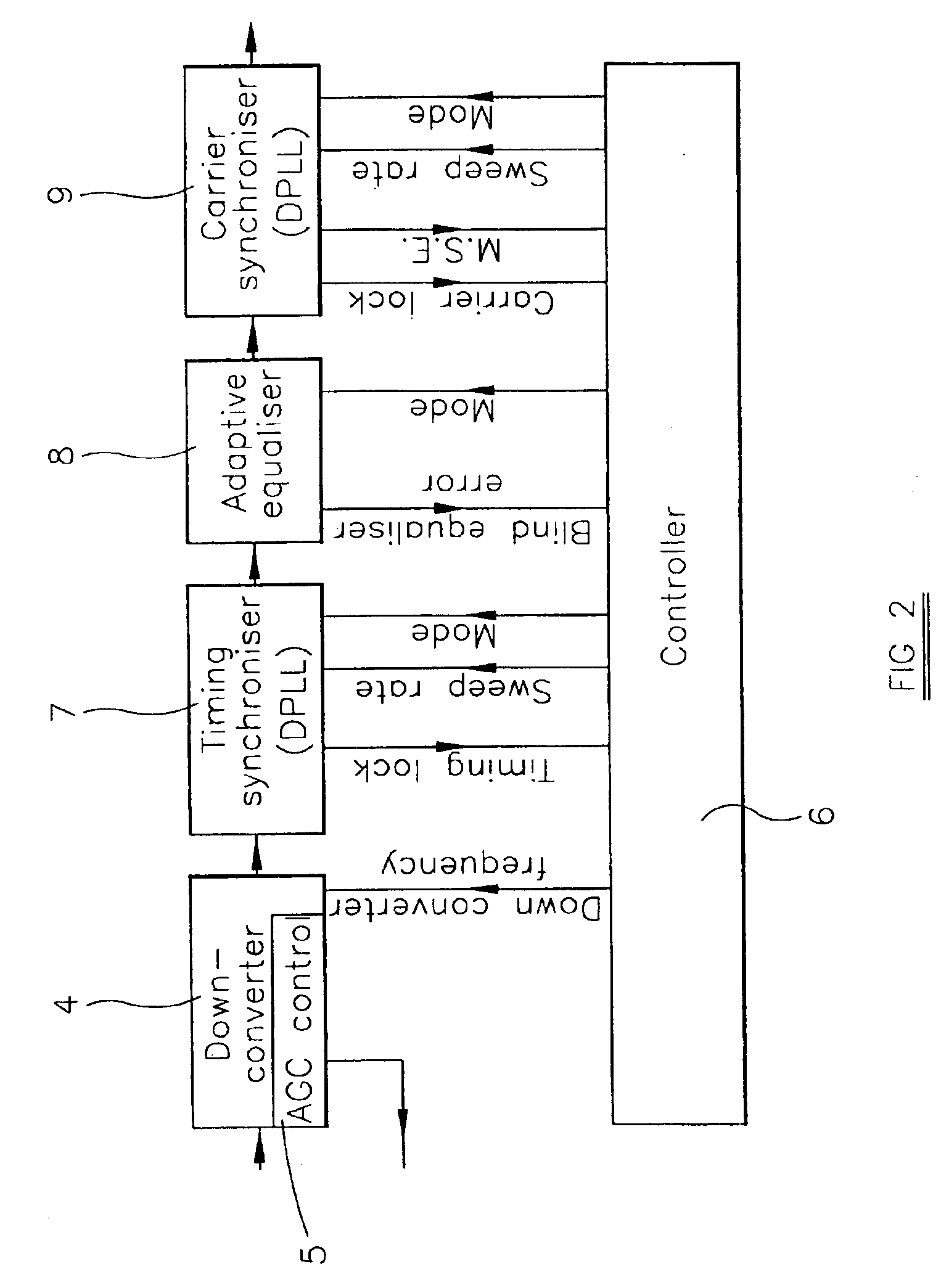Quadrature amplitude modulation demodulator and receiver
a qam and receiver technology, applied in the field of qam demodulators, can solve the problems of inability to make adc sampling rate equal, inability to make timing synchronisers work normally, and inability to make timing errors, etc., to achieve rapid and reliable locking of an incoming qam signal, poor signal-to-noise ratio, and high multipath
- Summary
- Abstract
- Description
- Claims
- Application Information
AI Technical Summary
Benefits of technology
Problems solved by technology
Method used
Image
Examples
Embodiment Construction
The tuner and demodulator shown in FIG. 1 comprise a tuner section 1 which receives a signal, for example, from a cable distribution network or a satellite aerial via a suitable head unit. As is known, the tuner section 1 selects a desired channel and converts this to a fixed intermediate frequency. The tuner section 1 also includes an automatic gain control (AGC) amplifier 2 whose gain is controlled so as to present signals of substantially constant amplitude envelope at the output of the tuner section 1.
In a typical example of such a tuner and demodulator for use with a cable network, the tuner section 1 selects a channel having a bandwidth of 6 or 8 MHz centred at 7 MHz. This signal is supplied to an analogue-to-digital converter (ADC) 3 which samples the incoming analogue signal and converts the samples to digital code. In practice, the ADC 3 is free-running in the sense that its sampling rate is not phase-locked to the transmitted symbol clock. It is not possible to make the sa...
PUM
 Login to View More
Login to View More Abstract
Description
Claims
Application Information
 Login to View More
Login to View More - R&D
- Intellectual Property
- Life Sciences
- Materials
- Tech Scout
- Unparalleled Data Quality
- Higher Quality Content
- 60% Fewer Hallucinations
Browse by: Latest US Patents, China's latest patents, Technical Efficacy Thesaurus, Application Domain, Technology Topic, Popular Technical Reports.
© 2025 PatSnap. All rights reserved.Legal|Privacy policy|Modern Slavery Act Transparency Statement|Sitemap|About US| Contact US: help@patsnap.com



